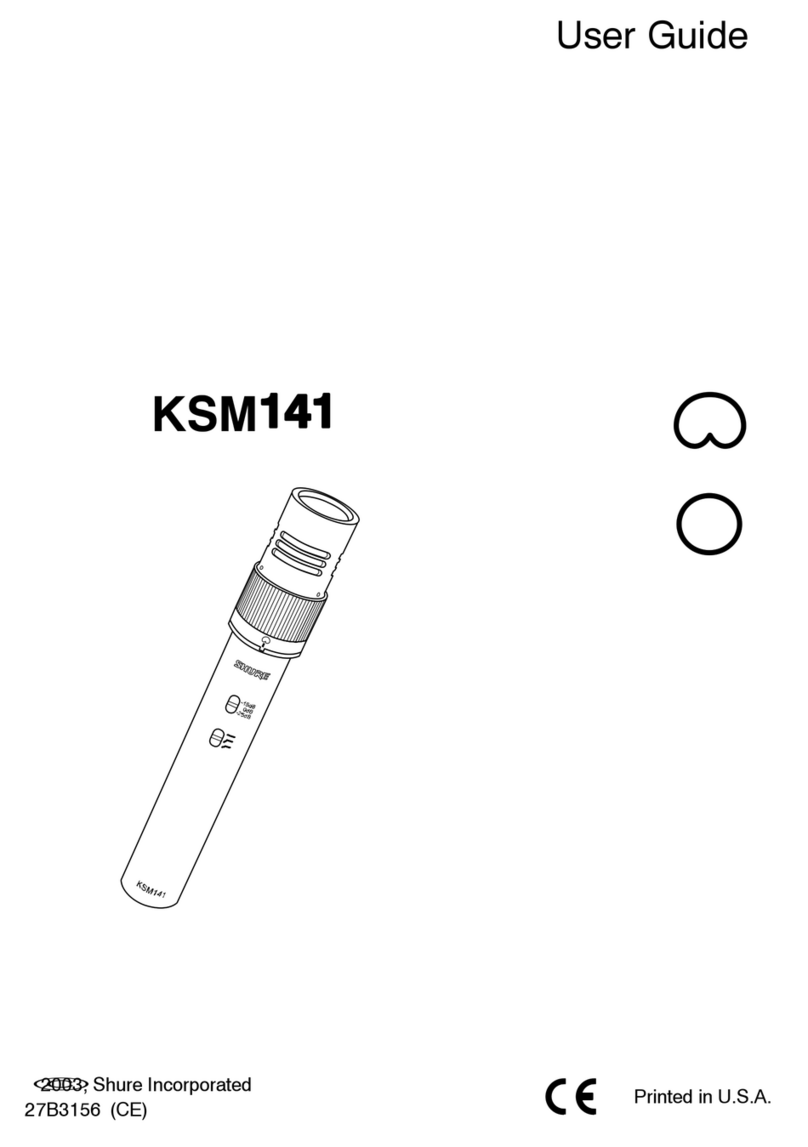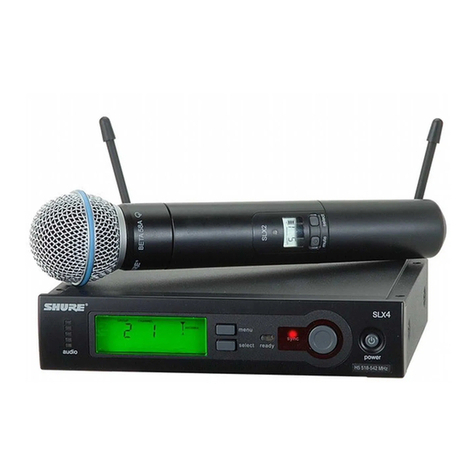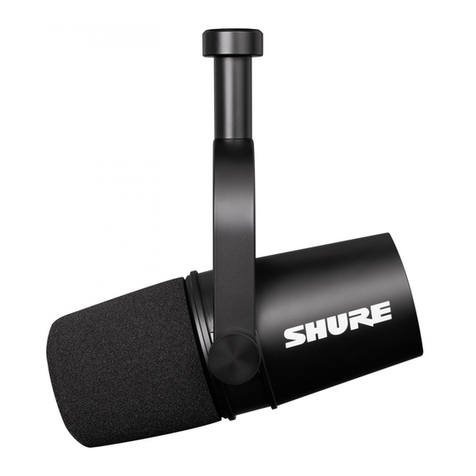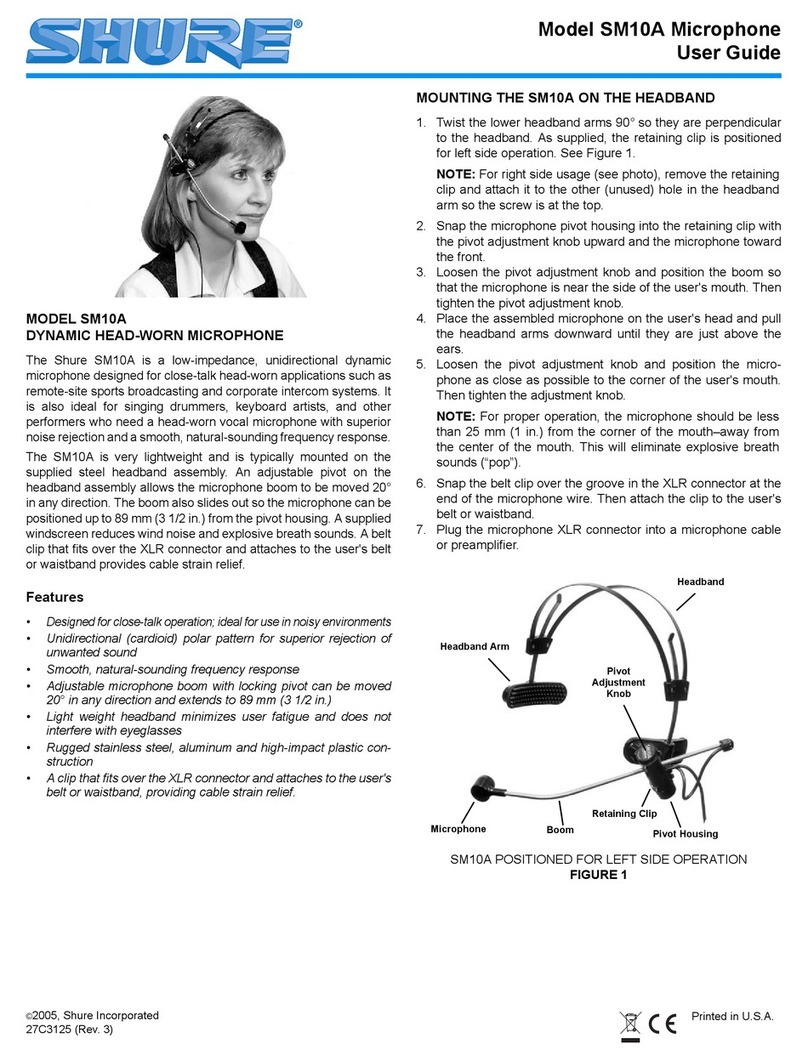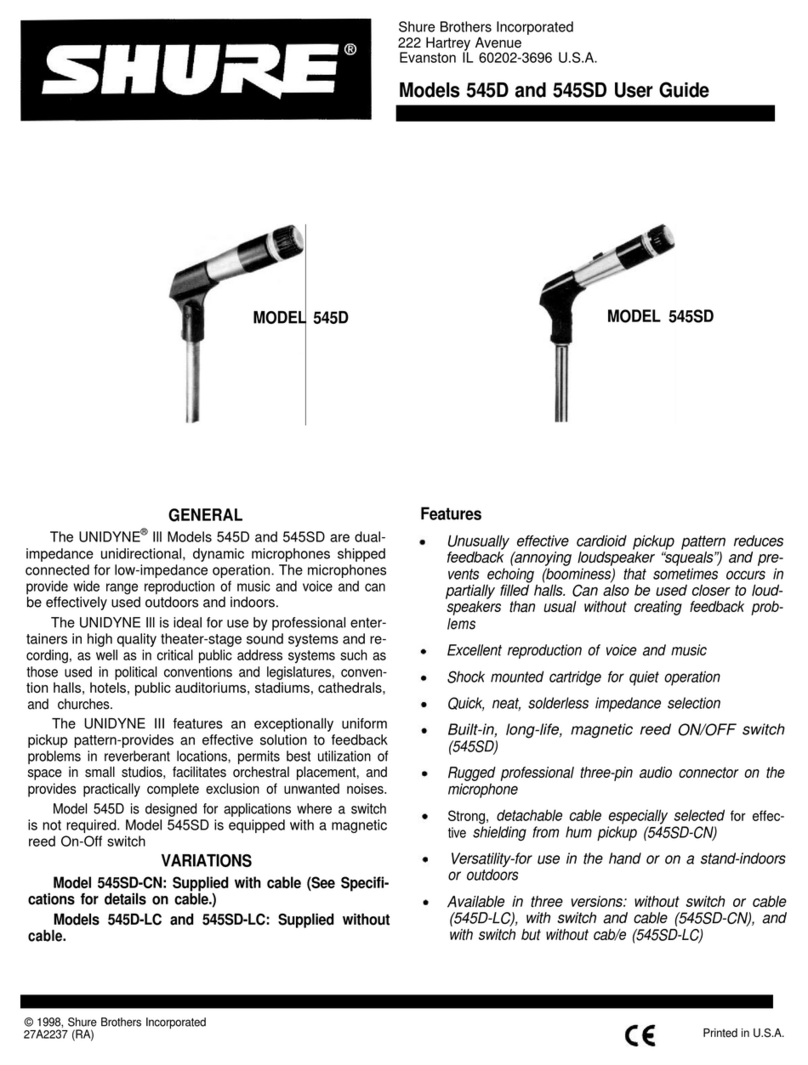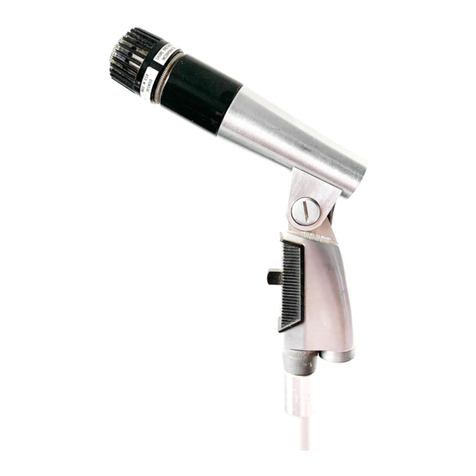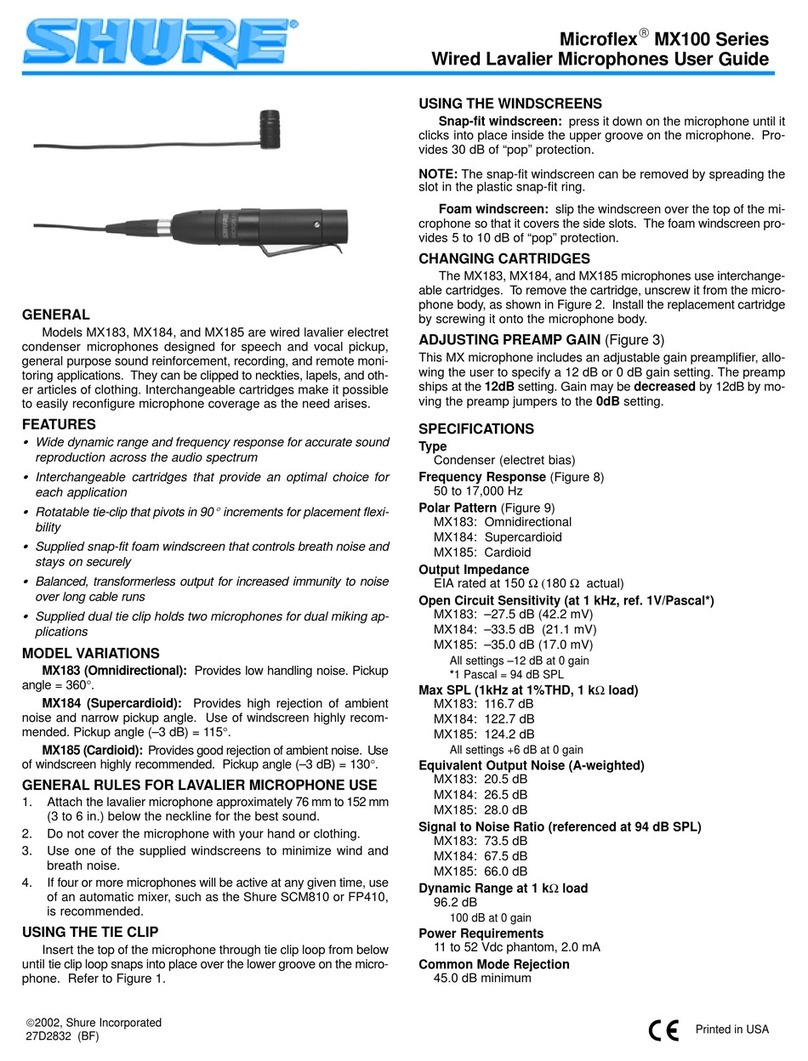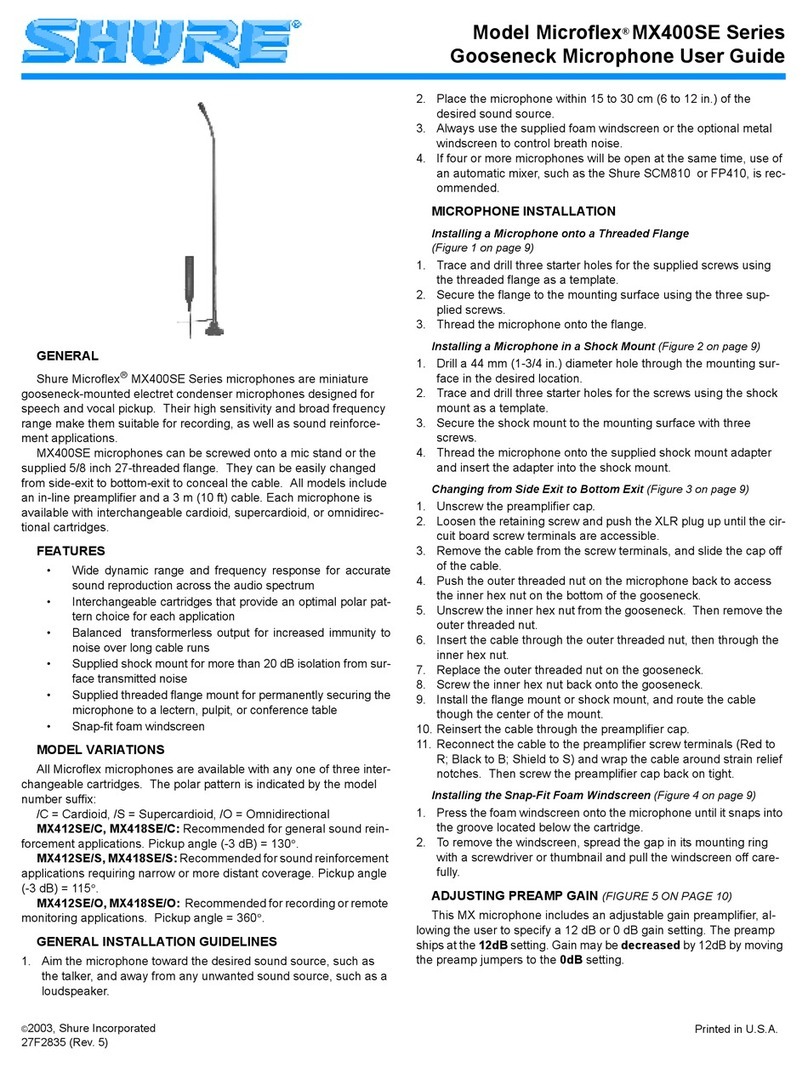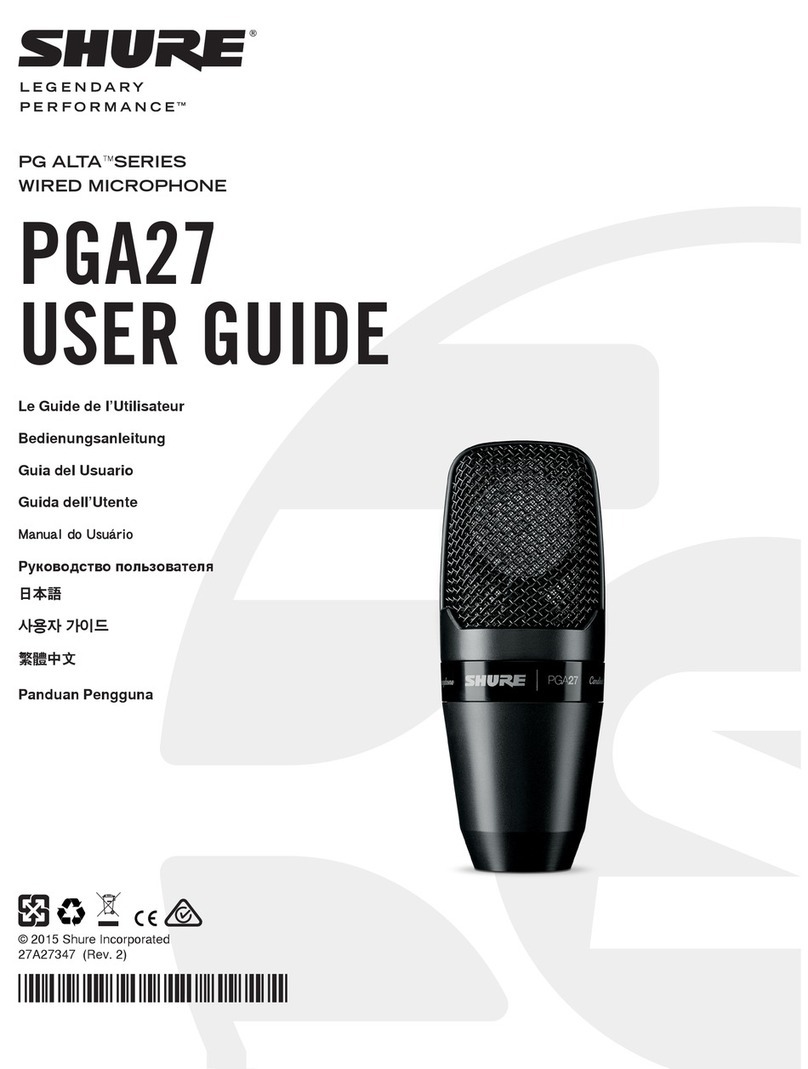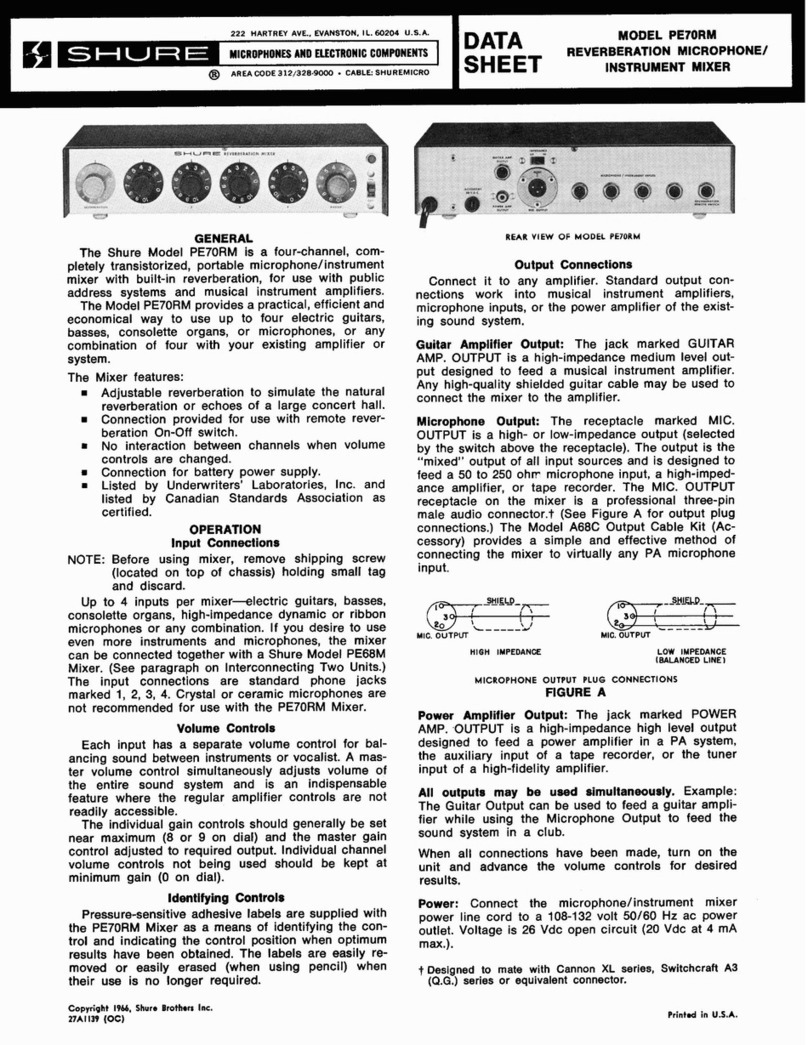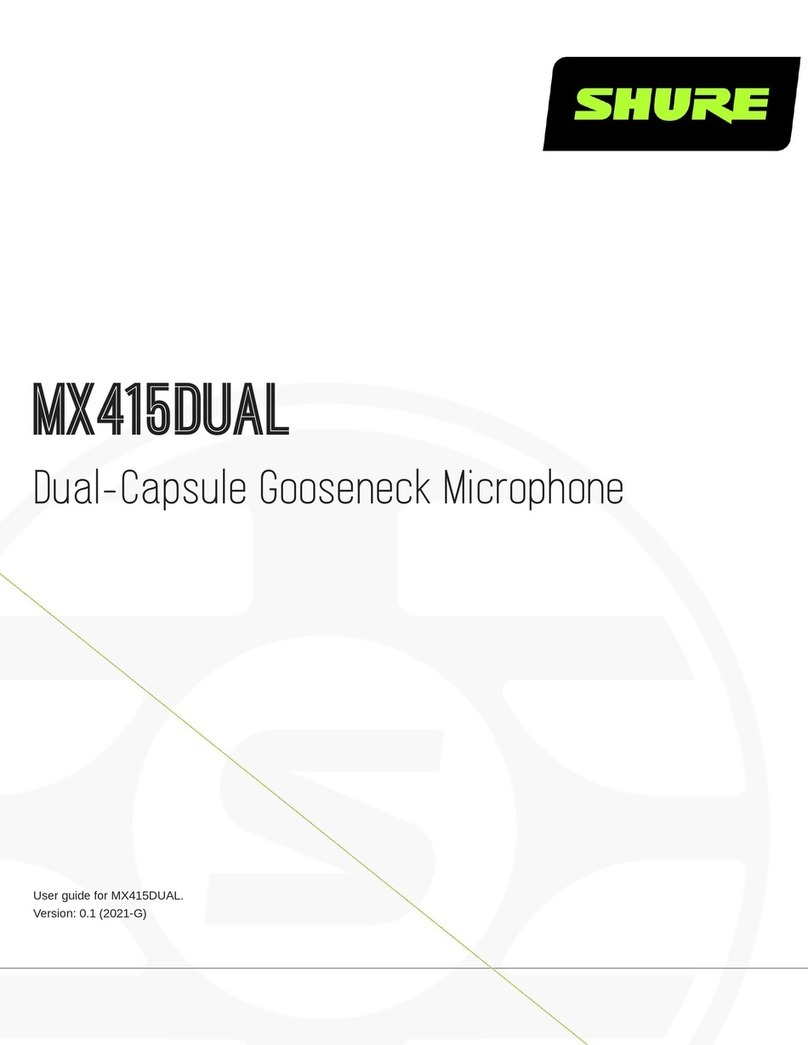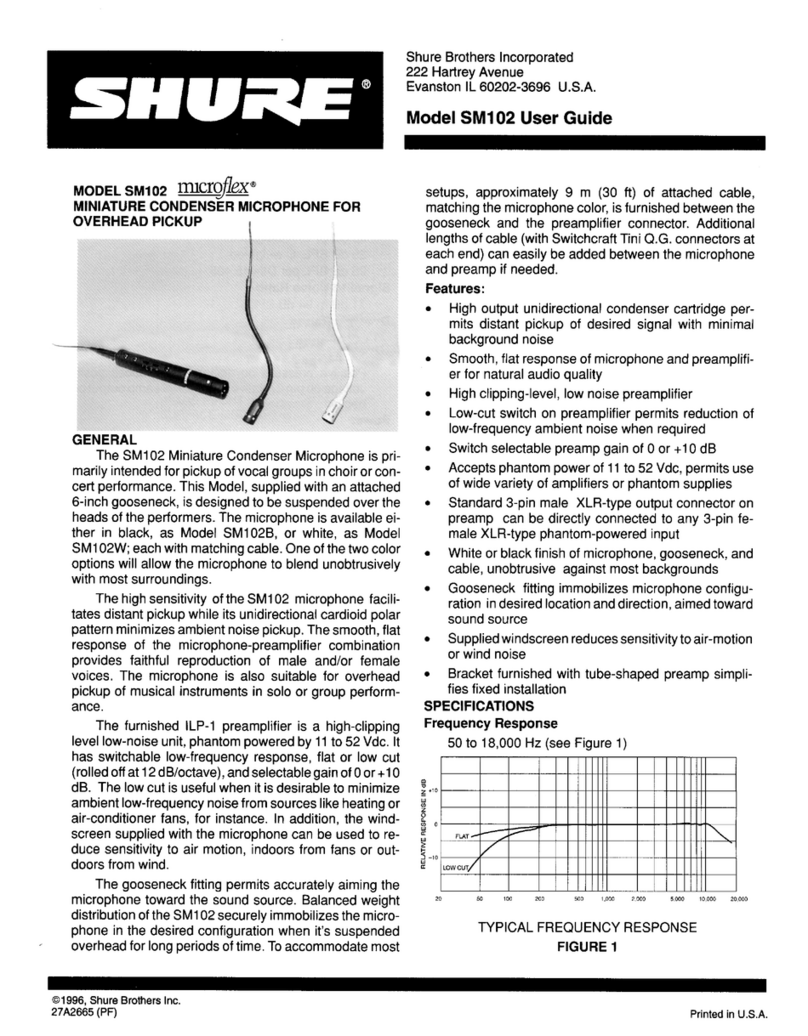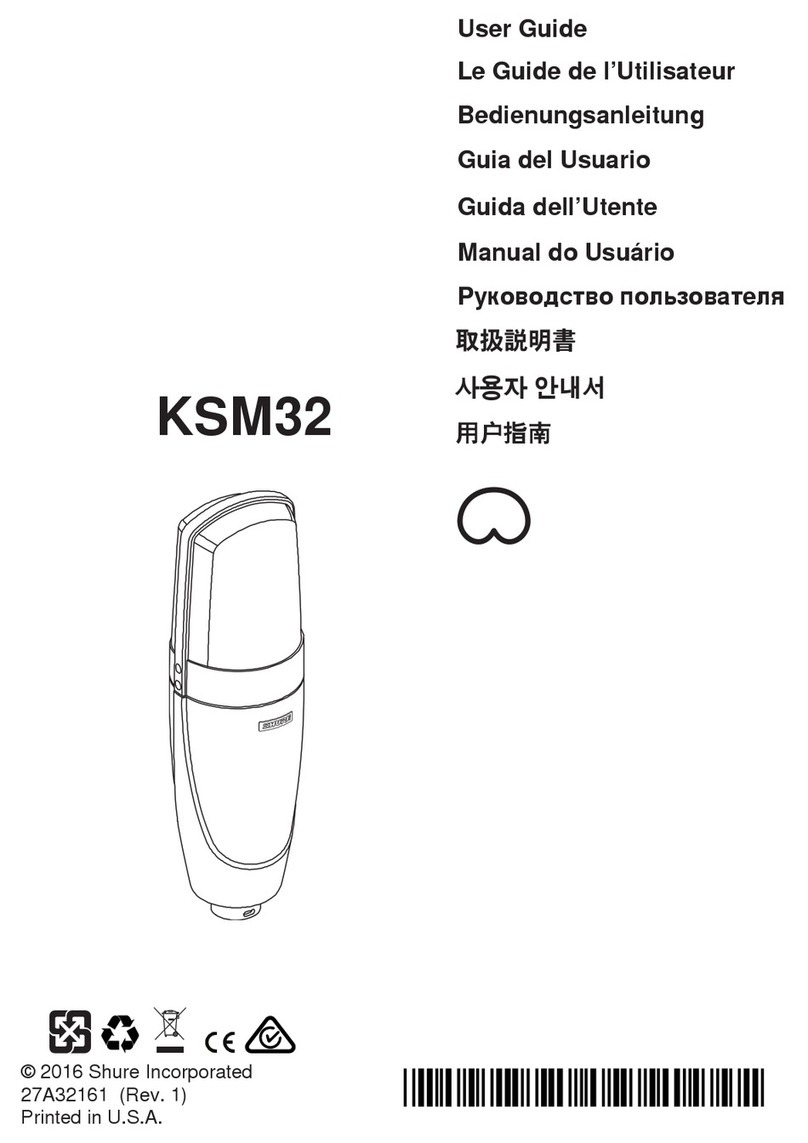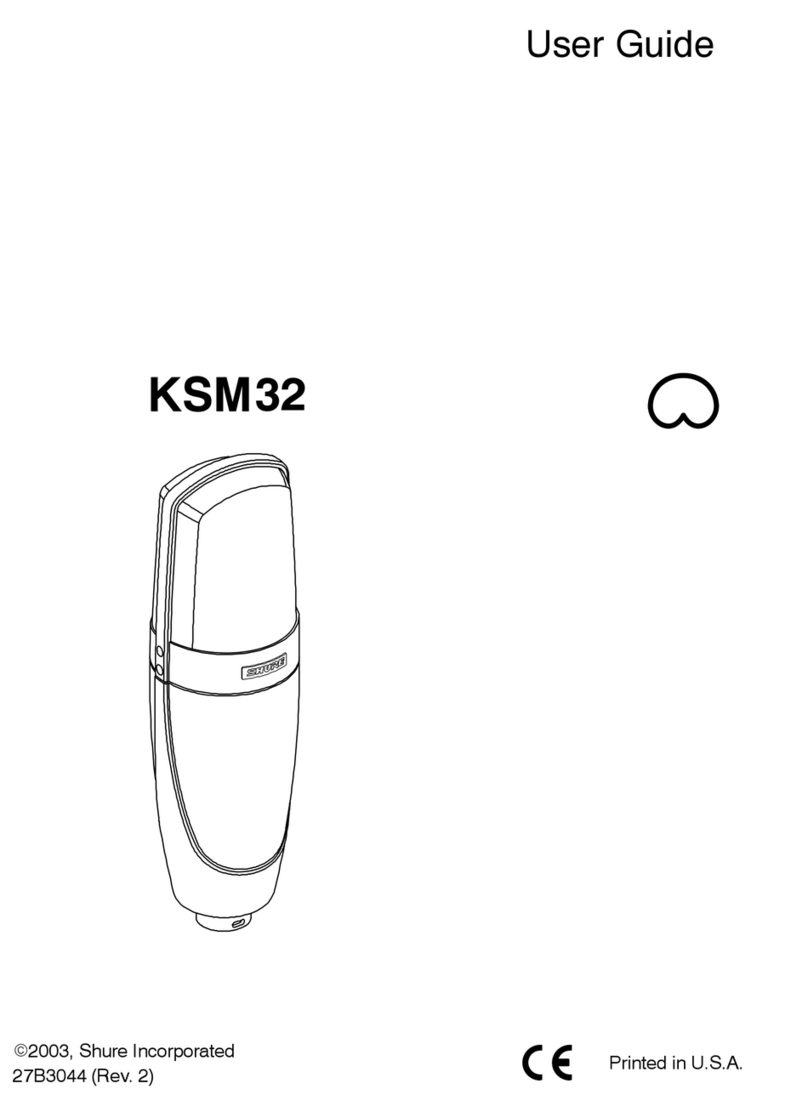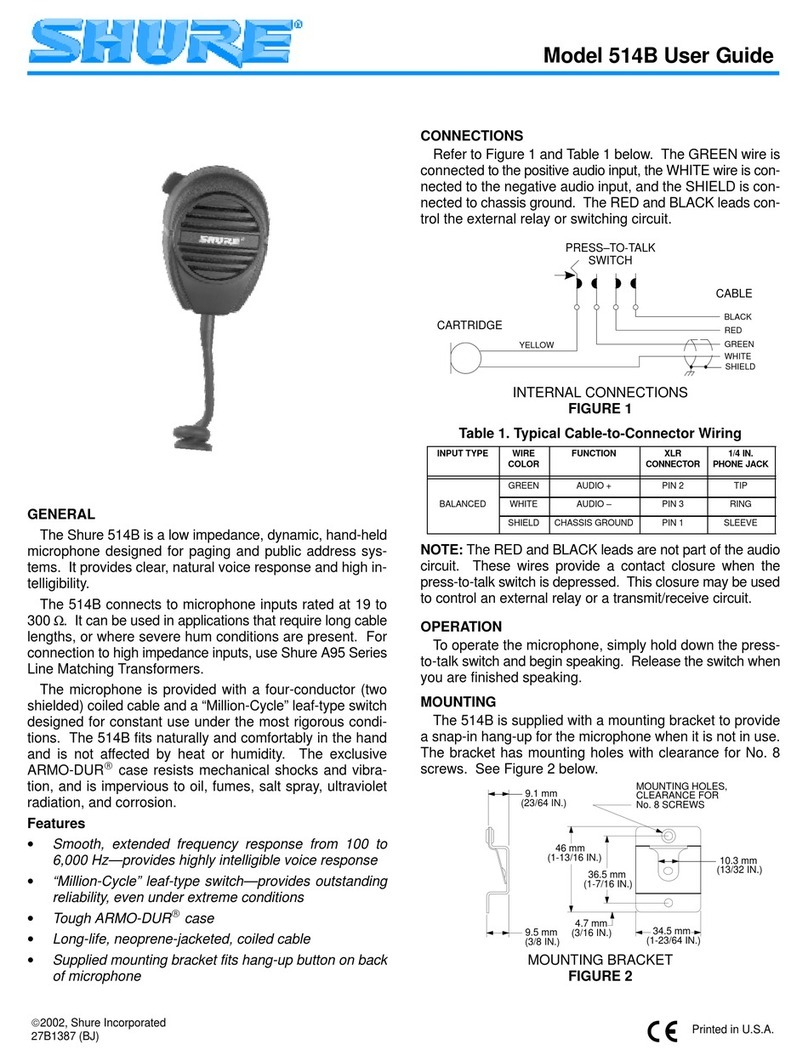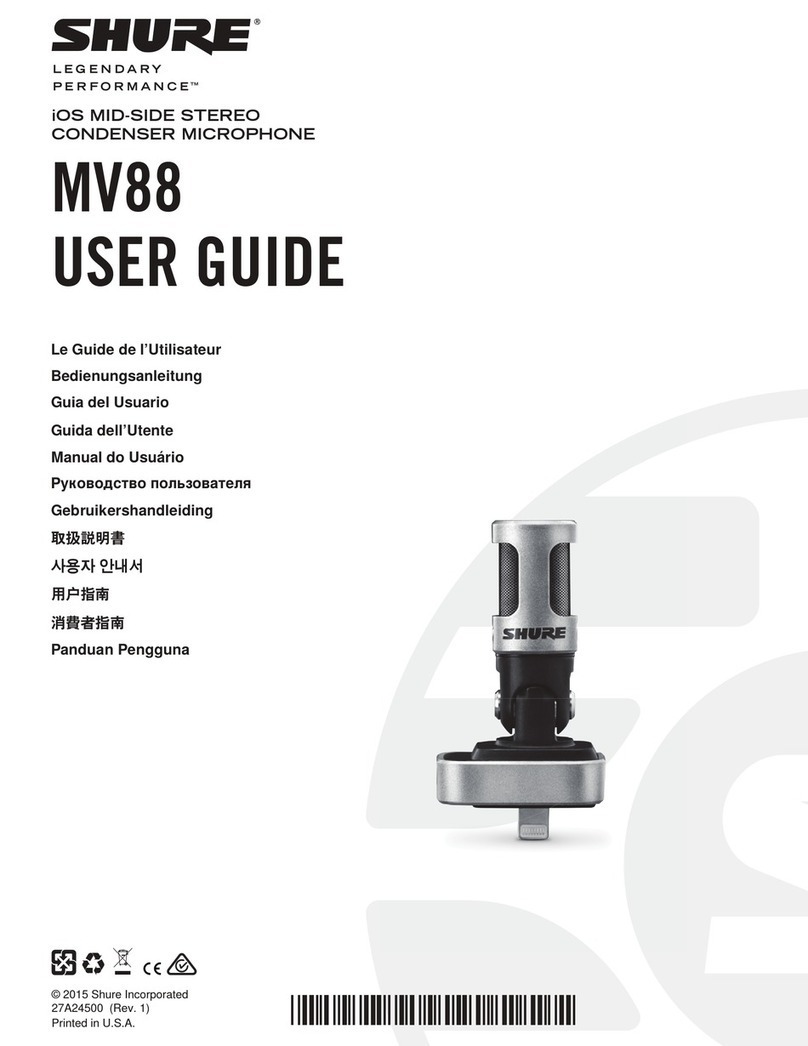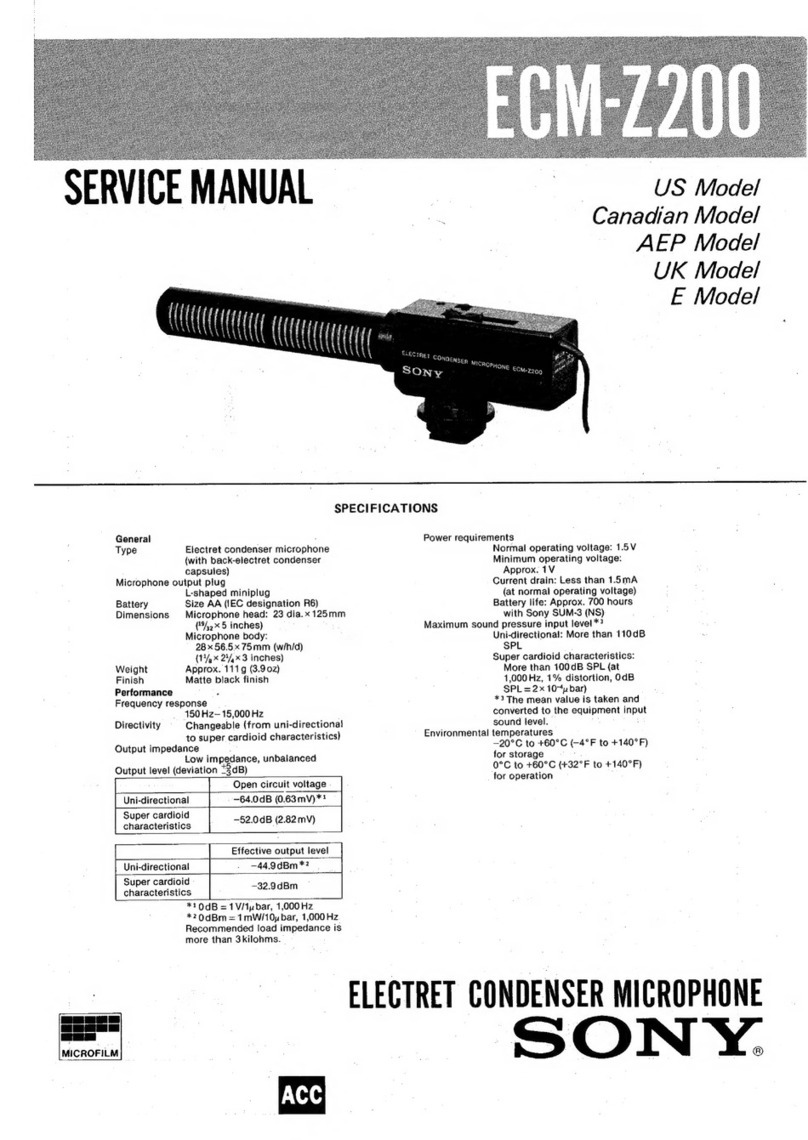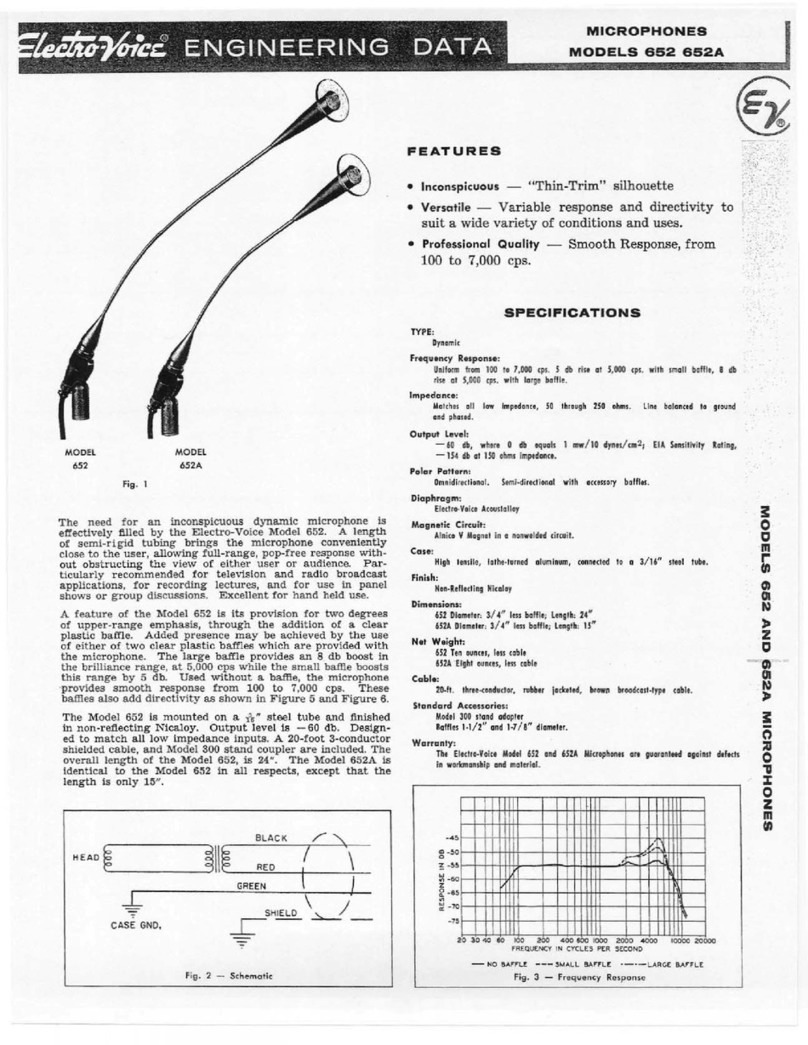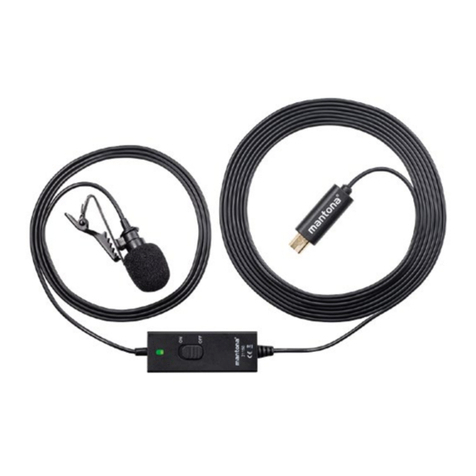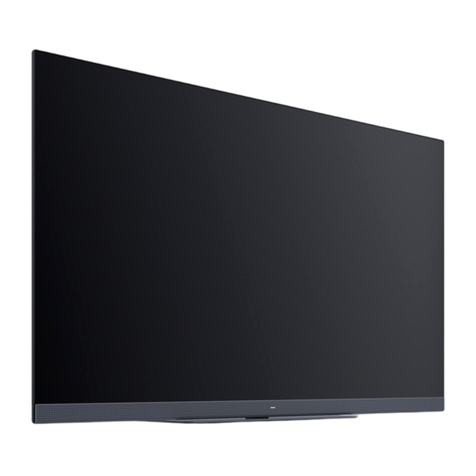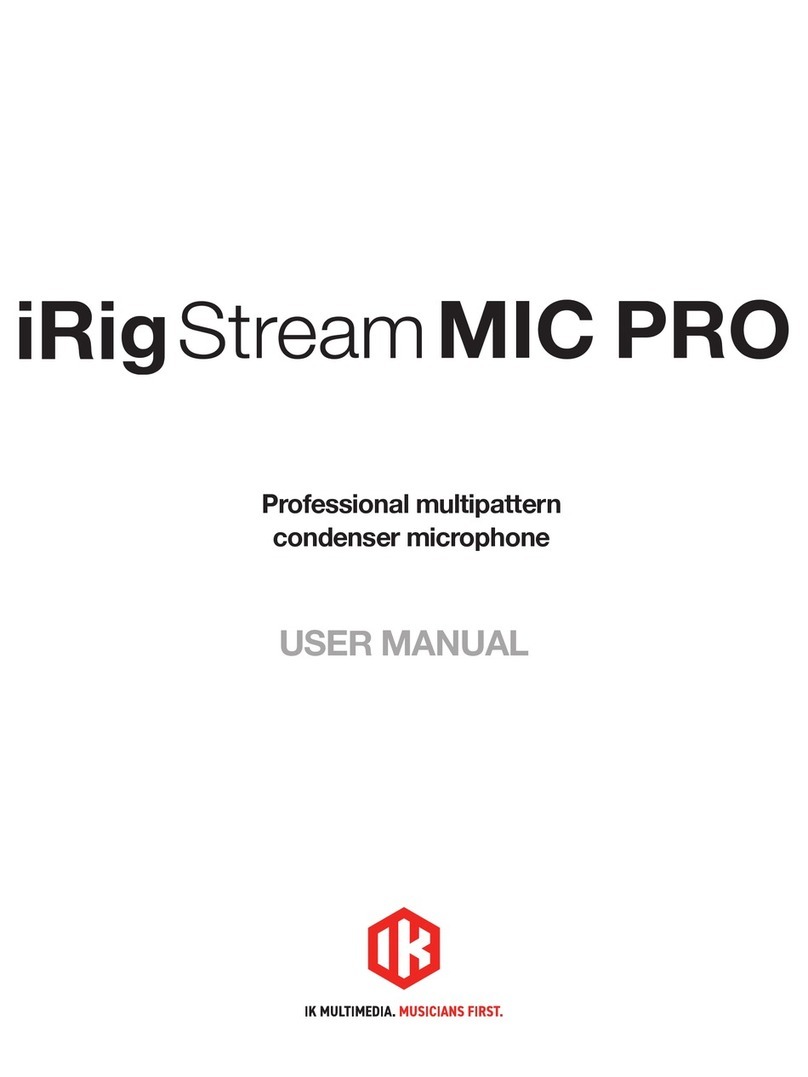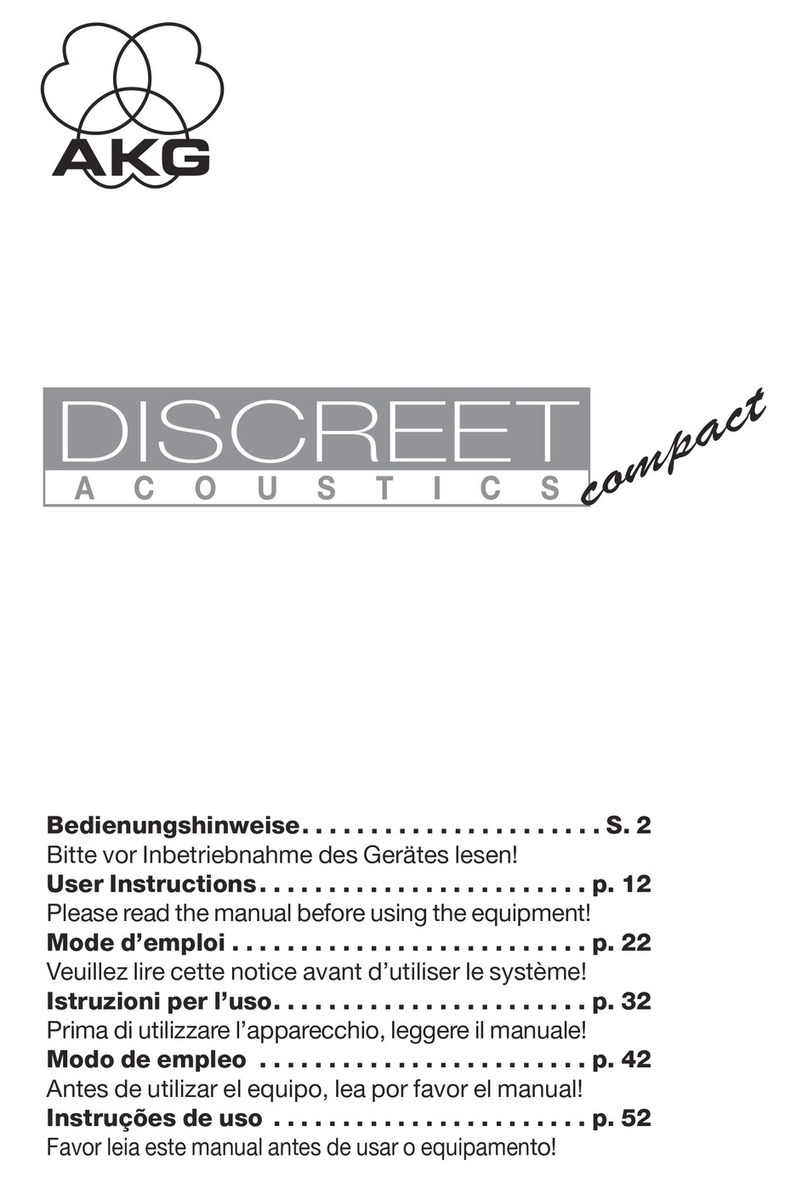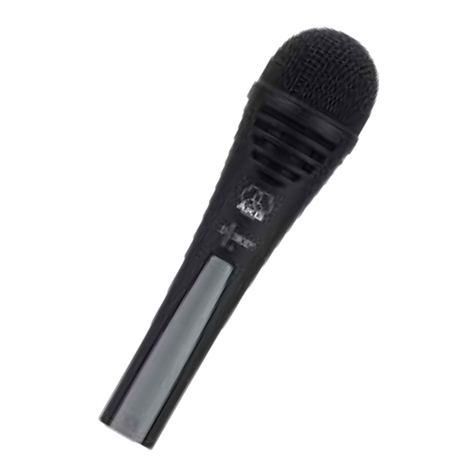4
OPERATION
Mounting
The ShureLock swivel mount and elastic shock mount provide a secure means of fastening
the microphone to a floor or boom stand. When using the swivel mount, the internal shock
mount provides good isolation. For greater reduction of noise from external vibrations, use the
elastic shock mount.
It is important when mounting the microphone that the threaded, knurled locking grip on the
shock mount or swivel mount is screwed securely onto the threads at the base of the micro-
phone. Do not overtighten.
Power
The KSM32 requires phantom power and performs optimally with a 48 Vdc supply
(IEC-268-15/DIN 45 596). However, it will operate with slightly decreased headroom and
sensitivity with supplies as low as 11 Vdc. Most modern mixers provide phantom power.
Phantom power can only be transmitted to the KSM32 through a cable terminated with XLR
connectors at each end.
Positioning the Microphone
The front of the KSM32 is marked by the logo. See Figure 1. Position this side of
the microphone toward the sound source. The rear of the microphone is marked by the
logo, the low-frequency filter switch, and the 15dB attenuation switch.
Selecting Low-Frequency Response
A three-position switch on the back of the KSM32 allows you to adjust the low-frequency
response of the microphone. The low-frequency filter settings can be used to reduce wind
noise, room noise or proximity effect.
Flat response. Provides the most natural sound in most applications.
Low-frequency cutoff. Provides a
15 dB-per-octave cutoff at 80 Hz. Helps
eliminate floor rumble and low-frequency
room noise from heating and air
conditioning systems. This setting may also
be used to compensate for proximity effect
or to reduce low frequencies that make an
instrument sound dull or muddy.
Low-Frequency Rolloff. Provides
a 6 dB-per-octave rolloff filter at 115 Hz. Use
this to compensate for proximity effect or to
reduce low frequencies that could make an
instrument sound dull or muddy.
20 100050 100
98765432
+5
0
–10
Hz
dB
Flat Response
Low-Frequency Cutoff
Low-Frequency Rolloff
FIGURE 2. LOW FREQUENCY RESPONSES

